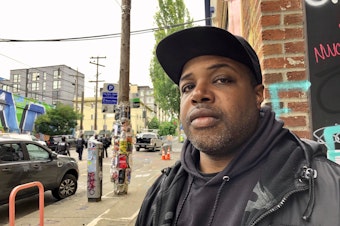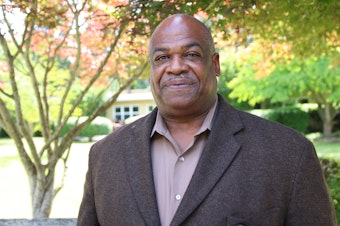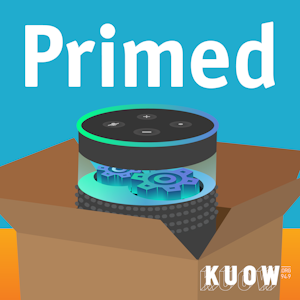Joshua McNichols
Growth and Development Reporter
About
As KUOW's Growth and Development reporter and co-host of KUOW's Booming podcast, Joshua's "growing pains" beat sits at the nexus of housing, transportation, urban planning, government and the economy. His favorite stories also include themes of history, technology, and climate change.
Joshua holds a B.A. in Architecture from the University of Washington. Public Radio is his second career; architecture was his first. He is proud of the many odd jobs he's held in his life, such as salmon fisher, author, bike courier, and bed-and-breakfast cook.
Location: Seattle
Languages Spoken: English
Pronouns: he/him
Professional Affiliations: The Society of Professional Journalists, Western Washington Chapter
Stories
-

As city workers dismantle the CHOP, Omari Salisbury reflects
From Seattle's protests after the killing of George Floyd to the closing of the CHOP, journalist Omari Salisbury of Converge Media has been live-streaming what he sees every single day. Now, as police and city workers dismantle the CHOP, he stands in his doorway overlooking Cal Anderson park. And he struggles with emotion while answering a seemingly simple question: What do you see out there?
-

CHOP will end, but the memory of its art will remain
Murals around the Capitol Hill Occupied Protest Zone in Seattle are disappearing. Most of the brightly colored barriers are gone now. And the words painted on the street are already looking less bright. Over the last weeks, KUOW's been talking to people painting graffiti in the CHOP to learn what it meant to paint in the streets during a movement like this.
-

The CHOP's long goodbye
CHOP, Capitol Hill’s Organized Protest zone in Seattle, is going to end soon. City officials have made that clear. But protesters disagree on how soon the end will come.
-

Here's what I've learned feeding protesters in Seattle
Jimaine Miller, A.K.A. the Def Chef, has been cooking a lot lately. That’s his job, but for weeks he’s also been cooking for protesters who march for racial equality and he's been cooking for people in the Capitol Hill Occupied Protest zone, known as the CHOP. He cooks with hundreds of pounds of donated food, and gives it away for free. And it's changed him in ways he didn't expect.
-

In its final days, CHOP tries to create safety without becoming the police
This week, Seattle Mayor Jenny Durkan announced the CHOP will end, and police will return to the East Precinct building at its center. But in the meantime, occupants of the Capitol Hill Organized Protest zone are trying to show they can keep their community safe without police.
-

As a youth, I ran from police. Now, I work with them.
Maurice Lee is the Chief Operating Officer for Navos, a local non-profit that helps people struggling with addiction or chronic homelessness get back on their feet and stay out of the criminal justice system. Lee's life experience as a Black man who works professionally with police has given him a complex perspective on police reform.
-

Race & Identity
CHAZ chews on what to do next
Capitol Hill’s new Autonomous Zone, known as CHAZ, is a six-block area around 12th and Pine. Residents, business owners and activists are trying to figure out what’s next for this hard-won territory.
-

Reopening stores highlight the joy of non-essential things
In King County, stores are reopening. Now, they just have to convince customers it's safe to return. We visited stores in Seattle's Wallingford neighborhood to see how that's going.
-

"You don't see this type of youth influence anywhere else in the area"
In fight for equality, young People of Color in Burien, Washington say their city can be a model for other communities
-

Race & Identity
Seattle protests: 'the time of the never-seen-before'
Voices from the protests in Western Washington. KUOW talks with marchers who went through University of

